The first workshop was organized in Hanaholmen, just outside Helsinki in March 2024. The workshop was a three-day meet-up with 30? Young people from all over the Nordics. The participants represented a variety of backgrounds, with some having several years of experience with active participation in different organizations and others not having much experience at all. This combination of different backgrounds and experiences created valuable insight into what organizations and youth activism looks like in different contexts.
During the workshop we discussed the concepts of democracy and participation, different ways to participate, the current challenges and opportunities as well as resources already available.
Learning goals
- analyze and look at resources currently available for our youth organizations
- Main challenges we need to work with in going forward with the cooperation are
- their financial
- administrative
- any other barriers
- Who are young people, members and participants today
- How can we make sure that we maintain their interest and activism
- Create an understanding of the base we must work on and the direction we want to move forward with during the project.
- How youth see activity in associations, and what drives them to active participation.
- Set up of the project
- Create structures for cooperation, such as a working group, technical tools, planning, communicating about and production of the activity itself as well as coordinating the results and communicating these.
Program
Session 1 – Who are we?
Session 2 – Mapping the situation
Session 3 – Democracy and today’s situation
Session 4 – Challenges
Session 5 – Resources
Session 6 – Maintain interest
Wrap-up & feedback





Key outcomes
Who are we?
- Young people are motivated by a variety of things, but for many it is wanting to make a change in their own circumstances or the circumstances of those who share similar challenges. This can be connected to lived experiences or issues they are moved by.
- A strong motivator is community, and the feeling of belonging to a group of like-minded people.
- For some, the motivation is to get a feeling of achievement and accomplishment.
There seems to be a disconnect between the motivators expressed by youth and the true opportunities experienced in the real world. Youth participation is often left on a surface level or as something required to check a box, without giving it the value and space it deserves.
The challenge with community is creating it between people who seem to communicate in different ways and on different platforms. Communication is the key to community, and without reaching each other with genuine interest in each other, creating community becomes challenging.
The question is, is there willingness and bravery to open these spaces to young people for genuine participation from the grassroots up, all the way to positions of decision making?




Mapping the situation
- There are clear challenges for youth participation to be identified. Some of them are individual and some of them organizational or societal. The organizational challenges are those we collectively need to focus on to create more opportunities.
- Organizational challenges can be connected to community, resources, traditions, and will to change, measuring and proving impact as well as organizational sustainability.
Based on the participants, a basic issue for participation is the lack of information and access. The lack of information leads to frustration and the fact is that if you aren’t aware of something, it is very hard to know how to ask about it. This is connected to the issue of access, and making sure, that information is easy to find and readily available. Creating platforms for relevant information and increasing knowledge about these platforms is a great way of ensuring more people can access them. At the same time information must be curated, not to overwhelm those accessing information. Last but not least, information has to be trustworthy. In this day and age, it is sometimes difficult to separate truth from the rest of the stories, and so these platforms have to prove themselves as reliable sources of information.
Another major issue is resources, especially financial resources. When talking about young people, we often talk about a group with limited funds and time to set aside from work and studies. We need to be careful not to create structures only accessible to those with the means and the right connections. Supporting young people to speak their own truth through organizing independently, to involve them in policy-making and decision-making even in the so-called adult world is key to a continued sustainable society for all. The future of civil societies and civic organizations lies with young people, and if they are not encouraged to take part when they are young, they might not find interest in them at an older age. What the effects of such a development on our democracies and societies have, no one knows, but are sure to find out.




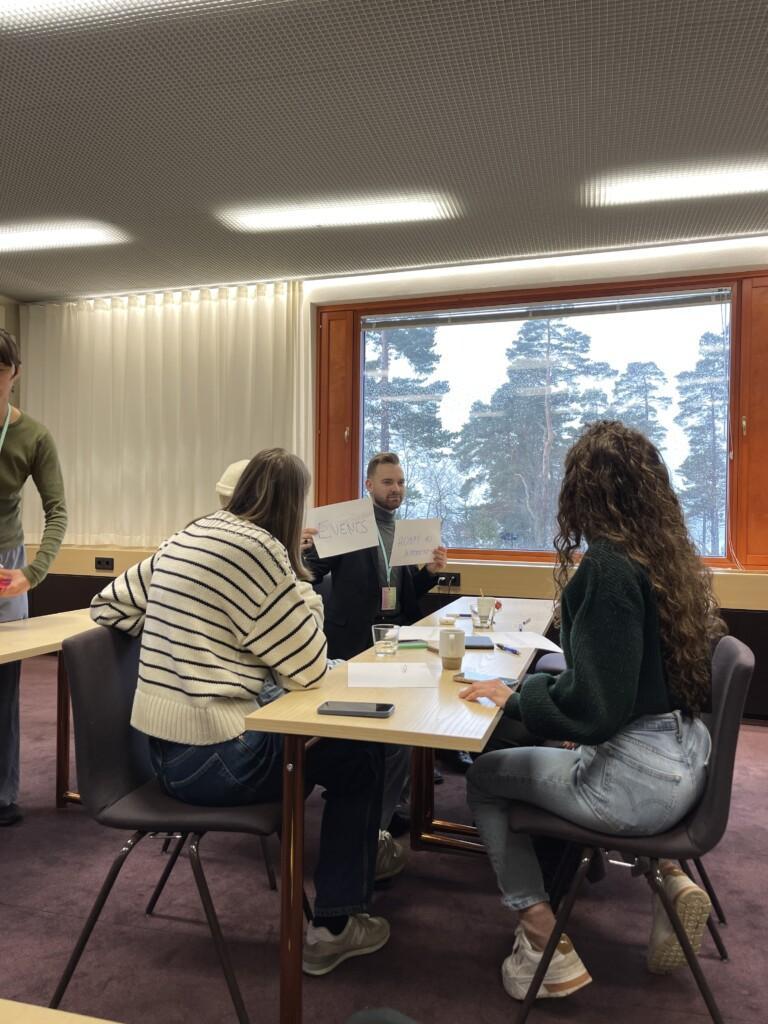



Democracy and today’s situation
- What do we mean by democracy and why is it important?
- How has democracy changed and developed throughout the years?
- What are the things we have achieved through democratic processes?
- Who has a voice in a democracy, what is the role of those who don’t represent the average citizen?
- What is the position of young people in our democratic societies, and how do we ensure their voice is heard?
The question of democracy is a complex issue, that still raises a lot of questions. The issues regarding representation, influence and voice are relevant in this discussion as especially young people don’t have the same access to e.g. voting rights as those who have turned 18. Still many decisions made in our democracies directly or indirectly affect them and their everyday lives. Even though democracy has carried us a long way it is important to discuss who actually are included in our democratic structures and how those who feel they are voiceless could be better included.
The Nordic countries are known for organizing, and civic organizing is a basis for our democracies. It seems though, that many organizations today are aging at the same pace as the population, and that young people don’t identify with or feel welcome into these organizations. It is a challenge for these organizations and those in decision making positions, to have the courage to bring in young people, to allow them to change these organizations to better fit their needs and strengths, and to maybe even transform them into something truly new and different.






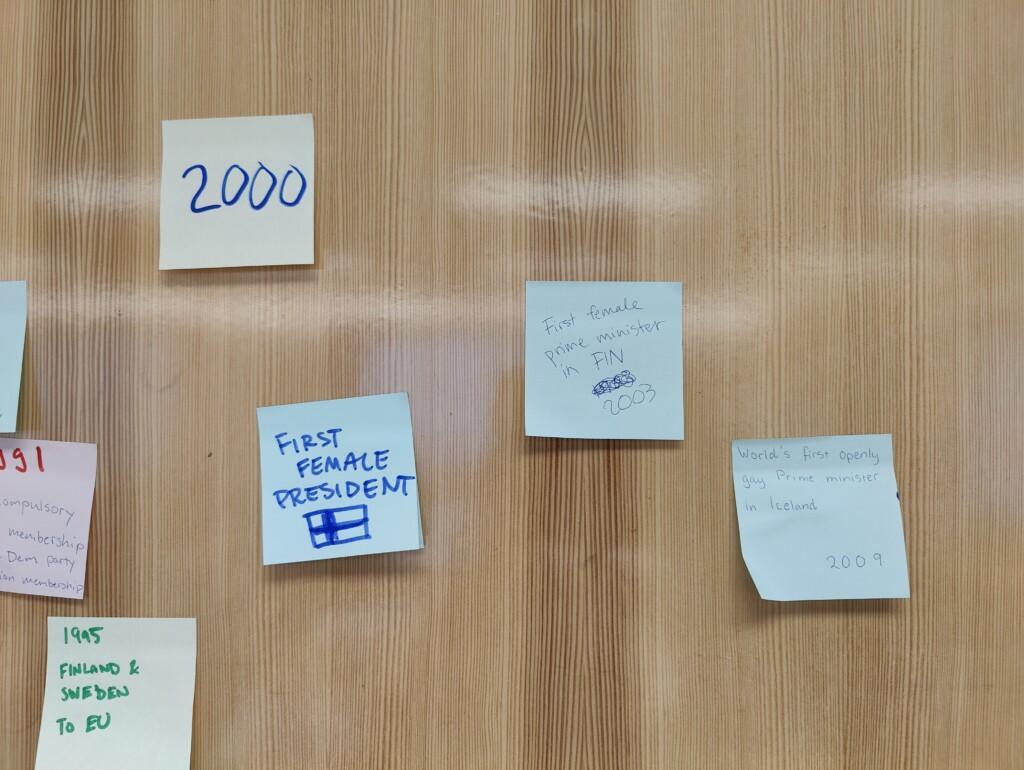


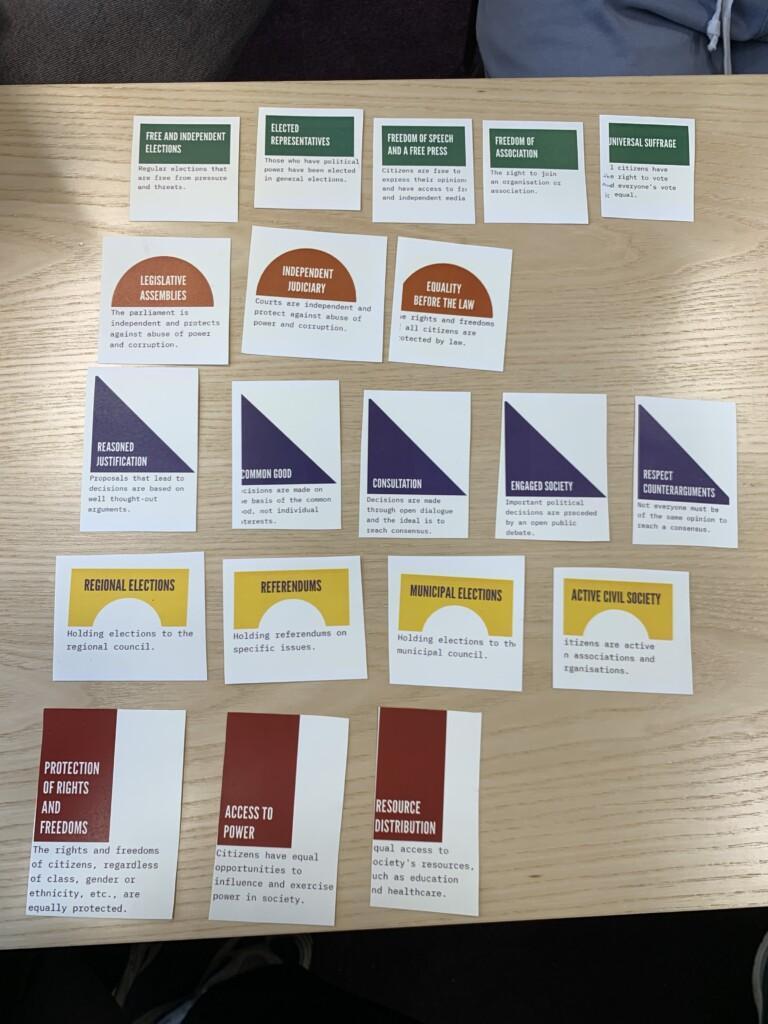
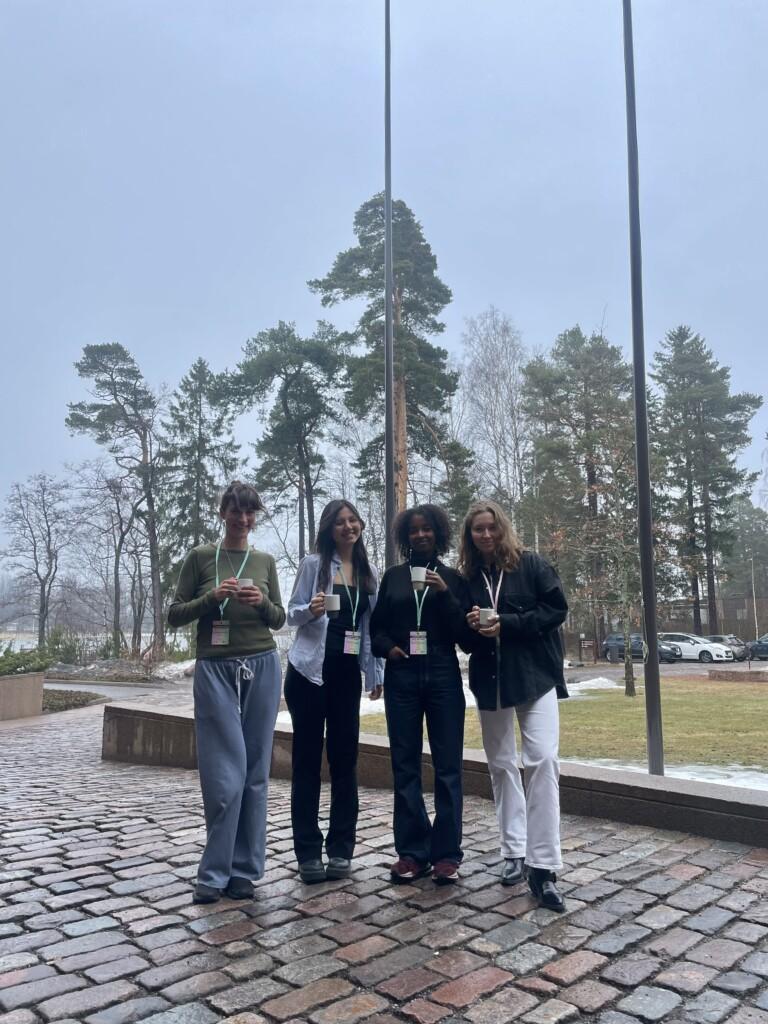
Challenges
- On a societal level there are some clear challenges that need to be tackled and answered in order to move forward with a constructive solution. Among these are:
- Who is a young person? Different countries, even in the Nordics, define youth differently. How can we talk about solutions if the reference group is different?
- Who represents young people? Is it ok to ask just any youth off the street, maybe your own or your friends’ kids or should representation be defined through democratic processes even among young people?
- Is youth representation genuine or is it performative or so-called youth washing, with young people present, but mainly for appearance, without a genuine voice?
- As young people are often only growing into themselves, and finding their place in the world, it can also be a challenge to find the self-confidence to stand up for themselves. To make sure we have youth voices heard, we need to find ways to build confidence and truly take into consideration what they have to say. For this, issues such as politics, civil societies, and policy-making must be brought into educations systems in a way that inspires young people to find ways they want to take part, affect and make a difference.
- At the same time there is a worry for those who are in the forefront of the movement, to take on too much, and feel the weight of responsibility on their shoulders constantly. The lack of support can in the worst-case end in burnout and actually repelling others from stepping up.
- Digitization and the speed of changes related to information flow, channels and platforms and the need to have a strong foundation in media literacy while allowing us to access extreme amounts of information and shrinks geographical distances also easily leads down paths of conspiracy theories and creates bubbles where only similar voices are present. The challenge becomes bursting these bubbles and ensuring people in general, but especially young people get exposed to different and contradictory world views. Geographical, societal and ideological mobility must be allowed as a part of the growing experience.
- We must not forget that with all the influences pushed on us constantly, it can require something very special or controversial to catch our attention. Creating such content requires resources and robust structures as well as a sustainable organization in the background. In order to get your voice heard you have to stand out, but long term, you also have to have the knowledge and support to carry possible responsibilities this work put on receiving attention brings.
When it comes to many of these challenges, we need to ask who our allies are. Who do we know that aligns with our ideologies and our goals and is there something won by working together towards a mutual goal. Youth organizations today are fairly good at working with each other, and often their goals, especially when it comes to just making their voices heard, are shared. The challenges become more concrete when working to find ways to influence and once again, unfortunately, what resources are available for such work. It is also important to look at what our target groups are and evaluate how these will help us achieve our goals.
Maybe the question is what kind of allies youth organizations could be to others, what do they bring to the table?



Resources



Maintain interest
- There are eight key factors that can be identified
- Accessibility is the key to involvement. Without access to the correct platforms, people, information, and decision making it is impossible to stay involved and maintain motivation. Without access participation is only in name only, what we call youth washing.
- Autonomy is an interesting concept, that refers not only to the individual’s autonomy to decide over themselves, but also the autonomy to gather, organize and disagree with those in power. Autonomy is also complicated to achieve, as most youth organizations rely on financiers who often set up demands for what that money can be used for, and the idea of disagreeing or acting against a financier weighs heavy, when there is the risk of losing all funding.
- Communication is the one thing we can never do too much of and even though we all communicate constantly, many of us are not very good at communicating outside of our own community. With the development of technological platforms, communication styles and language, it seems all the harder to reach several generations with one message. To motivate young people to join and stay in civil organizations we need to find these platforms for cross generational communication.
- Diversity in civil society, at least in the Nordics still requires a lot of work. From a youth point of view, the biggest issue is the generational gap, between those, who have been active in civil society for decades, and those who are only entering it. It is as much a question of interest in civil society as it is of the will to let new generations in and let go of control. Diversity is a question of social power and creating opportunities for groups with limited opportunities and power, to step forward and voicing their points of view. It is a question of tolerating change and losing control.
- Flexibility for many young people means facilitating time and resources for studies and work as well as opportunities for civil action. This might mean that the forms of participation need to change to create alternatives to long term commitment. It also means, that there is often a choice to be made between many options and directing resources at what feels most relevant at the time.
- Purpose is the fire that makes us act. Purpose can be found in community and other people or in creating something better for others. Purpose is something that comes from within, but it can be woken by learning more and seeing the world. Through new opportunities young people are able to find purpose in life, but also in participation and community.
- Trust is an important factor in any community. Trust is a multifaceted concept, as it refers to relationships between people, but also to trust in structures, organizations but also in one’s own capabilities.
- Support is the basis for a safe community. Safe to learn, fail and try again. Through safe learning spaces and the support of those who have lived through similar situations, young people feel safe standing on their two own feet. But learning is always also about teaching, and vice versa. Genuine listening and hearing each other we are able to find common ground.
It is of outmost importance to maintain the interest of young people in civil society and its organizations, to ensure these organizations’ future. Many of the Nordic countries rely on civil society and civic organizations to make our societies function. This work is often voluntary with little or no compensation.
The key factors listed above often overlap, and none of them alone will help motivate or maintain young people in civil society or organizations.
Change is the one constant, and even though it is uncomfortable sometimes, it is something we have to live with. It seems that though many issues in society stay the same, the way we deal with them and the tools we have change and develop, and civil societies and decision makers must be open to changing with the times.
Those in power today must be willing to let go and let in new ideas and ways of doing things. For some organizations this might mean a change in organizing, a change in leadership methods or in activities, it might lead to new ways of participation and letting go of the old.



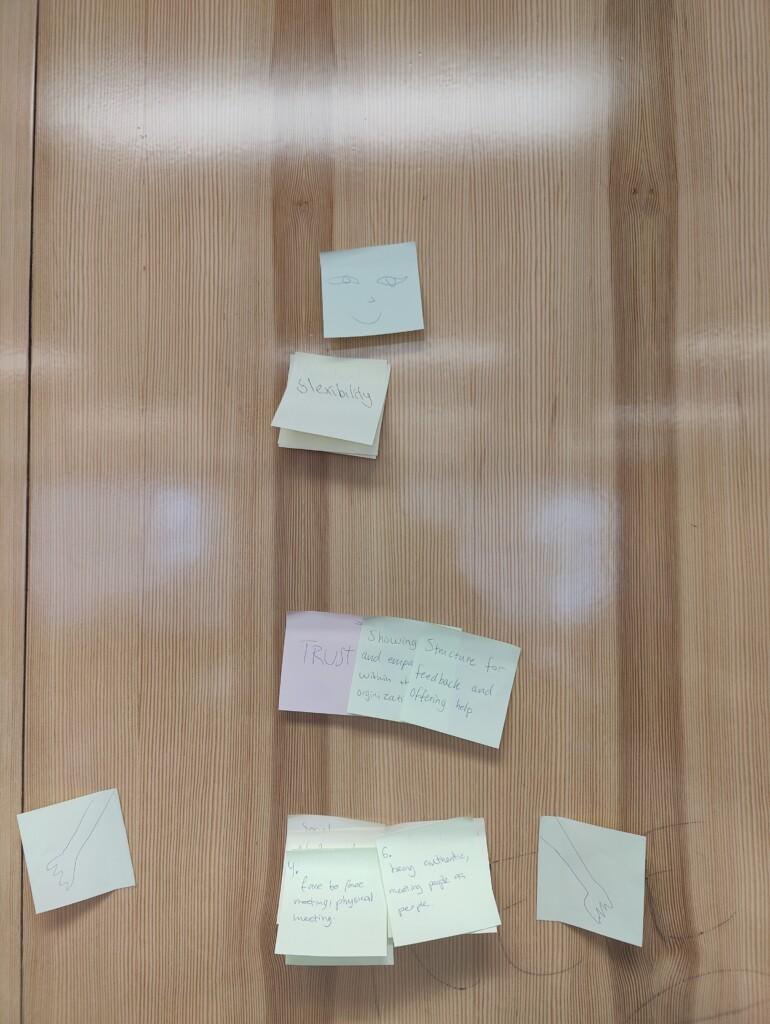


We did also have some fun in between working!
Thank you to everyone who took part in the Workshop!










